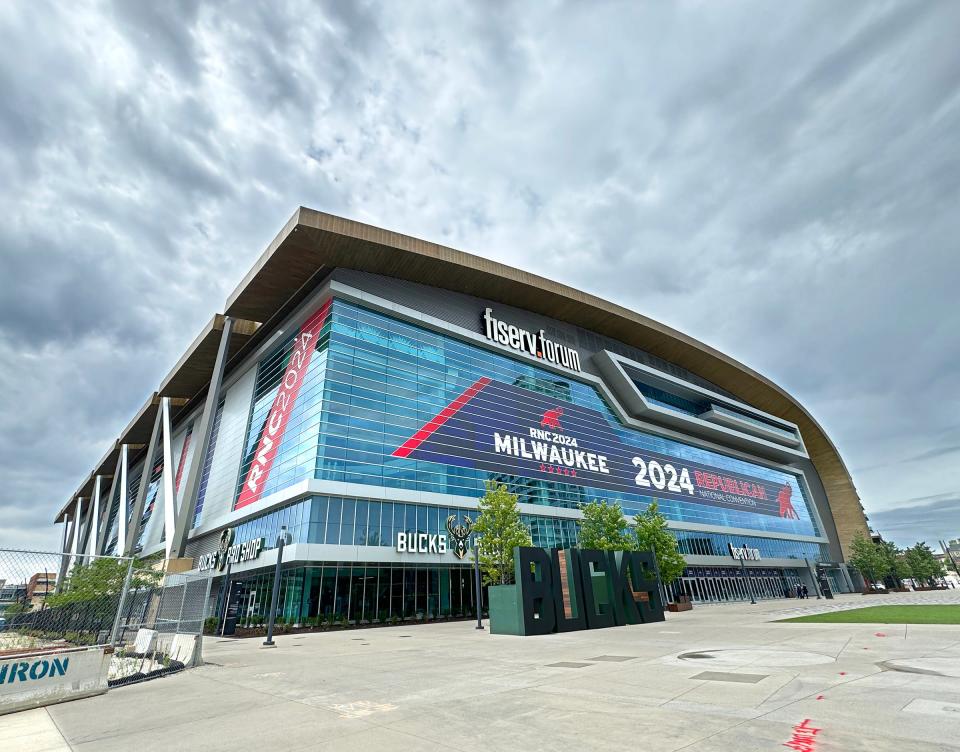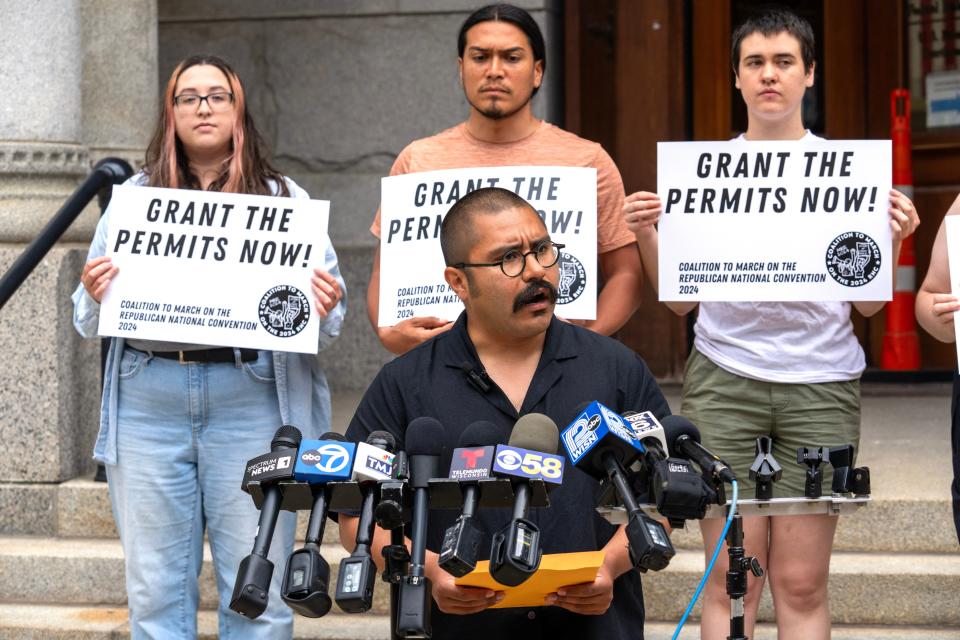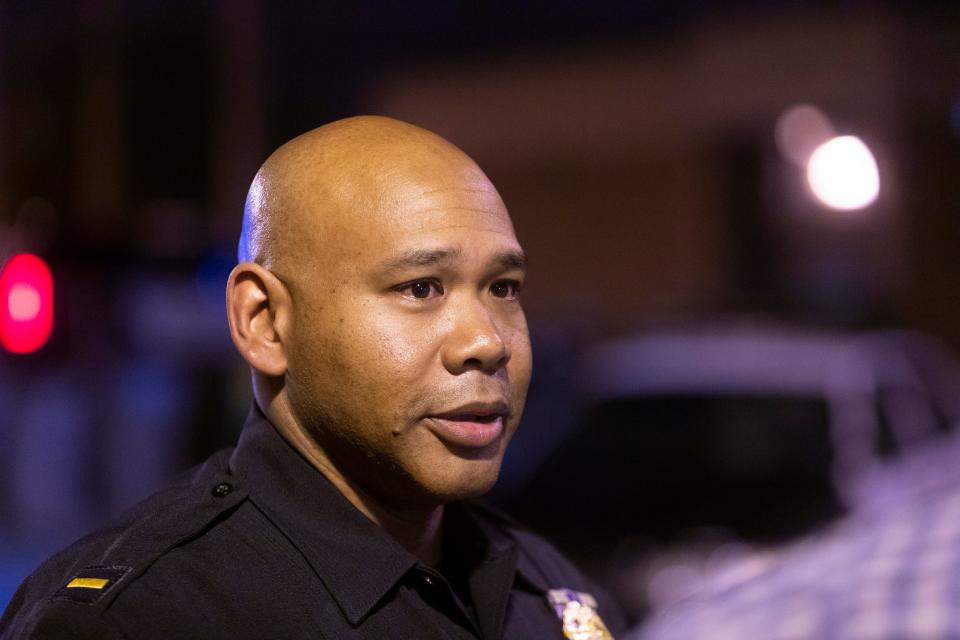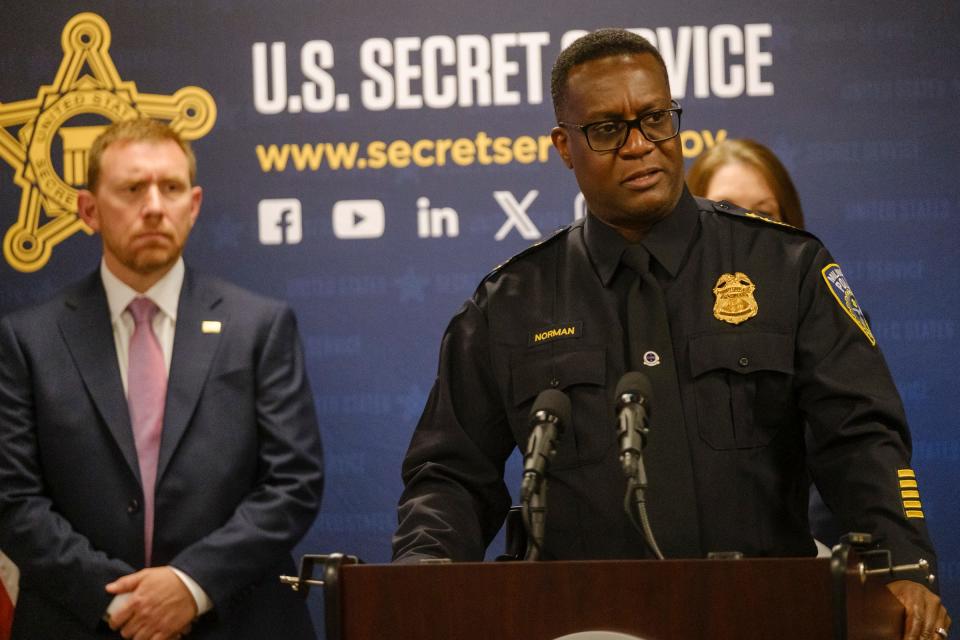How Milwaukee police will handle protests at the RNC and what some say is missing from their plan
Four years ago, Milwaukee considered banning the use of tear gas and pepper spray on crowds after a summer of protests and civil unrest.
That moment was brief.
Now, those options remain on the table as the city prepares to host the Republican National Convention next week.
When and how police can use those options are among the details in a "rules of engagement" policy obtained by the Milwaukee Journal Sentinel. The five-page document provides the most explanation to date on how Milwaukee plans to police the convention and mass demonstrations.
The department's rules and policies will apply to the thousands of outside officers assisting with RNC security, according to an agreement letter reviewed by the Journal Sentinel.
The Journal Sentinel showed the rules of engagement to four experts and reviewed recommendations from national policing organizations and the federal government. Although the experts praised portions of the policy, some raised concerns with the department’s definition of a “peaceful demonstration,” the potential use of so-called stinger balls and a high-frequency audio device to cause ear pain, and language about mass arrests.
“It’s like it hasn’t learned the lessons from what’s gone wrong in the past,” said Edward Maguire, a criminology professor at Arizona State University, who has extensively studied policing crowds.
Other experts said the policy properly outlined a use-of-force continuum that can adapt to changing circumstances, like a dynamic crowd. Much of it relies on the judgment of top police commanders who will be taking in reams of information during the convention.
At previous news conferences, Police Chief Jeffrey Norman has said officers will show "patience" but will not tolerate violence or property destruction. One of his top commanders told the Journal Sentinel that chemicals and less-lethal rounds like rubber bullets are tools of “last resort.”
Milwaukee has hosted major events before but nothing on the scale of a full in-person national political convention.
What happens here — and how police respond — will reverberate long after convention attendees go home.
“If there’s a lesson that should have been learned in 2020,” said Walter Katz, a senior fellow at the nonpartisan Council for Criminal Justice, “it is that police departments need to be very intentional, deliberate and conservative in how they deploy their officers and their weapons against people who are mainly peacefully exercising their First Amendment rights.”

How police responses can de-escalate, or escalate, a crowd
The most important tool for policing mass protests? Effective communication.
That includes talking to activists, protest leaders and community partners months before an event.
The Milwaukee Police Department has participated in more than 50 meetings with various community partners in the run-up to the RNC, Milwaukee Police Inspector David Feldmeier said.
Omar Flores, co-chair of the Coalition to March on the RNC 2024, criticized the handful of meetings specifically for protesters, saying limited information was provided and neither the chief, nor other high-ranking sworn members, showed up to answer questions, despite requests from the coalition to do so.
"In terms of how they engage with protesters, it could have been a lot better," he said.

During the RNC, city and police officials plan to communicate directly with community leaders to try to de-escalate any tension. Frontline incident commanders are expected to give loud, clear directions to crowds if needed, Feldmeier said.
“We always try and give people options,” he added.
A 2022 report from the U.S. Department of Justice and National Policing Institute recommends police use a “tiered protest response, starting with softer appearance and tactics, and adjust as needed.”
Milwaukee’s rules of engagement outline such an approach. At the start, officers should be in regular uniforms with their name or ID number displayed. The first few phases call for police to give repeated verbal directions through a loudspeaker.
If police order a crowd to disperse, officers should repeatedly tell people how to leave the area and give them time to follow the order.
But then things get murky.
If people in the crowd refuse to leave and start grabbing “projectiles” — but not throwing them — then police can start to ramp up their response with smoke, which crowds often wrongly assume is tear gas. Officers also have the option of moving a launcher for tear gas or other munitions into public view, but not using it, in an attempt to motivate people to leave the area.
Maguire said research shows such attempts to intimidate a crowd often backfire, with people feeling attacked and more resolved to confront the police.
The policy does not define "projectiles."
In 2020, the Police Department, which was led by then-Chief Alfonso Morales, was heavily criticized for using smoke and tear gas at North 6th Street and West McKinley Avenue after protesters threw water bottles and other objects. A bicyclist arrested there later sued the city over officers’ use of force and received a $270,000 settlement.
In an interview, Feldmeier did not provide a specific definition but said the department’s response to any projectiles would be “based on the totality of the circumstances.”
Katz, the police oversight expert, said officers need to be careful to distinguish between "what is and what could be," when it comes to projectiles.
“Somebody throwing a half-filled water bottle suddenly morphs into 'that could have been a Molotov cocktail,'” he said. “The police say, 'We didn’t know, so we had to respond.'”
“That kind of escalating hypothetical often then leads to escalating responses.”
What is a ‘peaceful demonstration’ and when does it become unlawful?
Some parts of the policy appear black-and-white.
One example: Officers are banned from using pepper spray on peaceful demonstrations.
But what is a peaceful demonstration? “A gathering of people expressing a position in a cooperative manner without violation of the law,” according to the policy.
Experts said the definition does not grapple with the main challenge of policing a large demonstration: how to effectively handle the few who are disruptive and violent amid a crowd of otherwise peaceful people without further escalating the situation.
Maguire, the Arizona professor, described that definition as "overly permissive." Theoretically, if one person was acting violently in a crowd of 5,000, then officers could use pepper spray because the demonstration would no longer be considered peaceful, he said.
“It’s important not to treat everyone as representative of those few,” said Chuck Wexler, executive director of the Police Executive Research Forum.
Feldmeier, the Milwaukee police inspector, told the Journal Sentinel that officers will “always try to get voluntary compliance” before taking any action with pepper spray, tear gas, rubber bullets or other less-lethal tools. That means talking with protesters directly or through community partners.

“Prior to the use of any of those types of tools, there’s a warning given,” he said. “We give several warnings and we give routes that people can take to remove themselves from that situation, and we let people know what the expectation is.”
Any use of pepper spray, tear gas or less-lethal munition like rubber bullets must be authorized by Norman, the police chief, or an assistant chief.
Overall, the entire policy appears to align with best practices, said Thaddeus Johnson, an assistant professor at George State University, senior fellow at the Council on Criminal Justice and a former Memphis police officer.
“It’s proportional use of force,” he said. “I liked that they laid out a use-of-force continuum.”
When can police use rubber bullets and other ‘less-lethal munitions’?
Although called “less lethal,” these tools can produce ear-splitting pain, cause swelling and watering of eyes and send shards of plastic into flesh.
At least seven people in the U.S. lost an eye and more than 100 others suffered serious head injuries after being hit by “less lethal” munitions during large-scale racial justice protests in 2020, according to USA TODAY and Kaiser Health News reporting.
Such tools “should be considered only if other tactics have failed and demonstrators are actively threatening public safety with violence,” a 2022 report from the Police Executive Research Forum recommended.
The report also noted that pepper spray and tear gas should not be used in response to “minor acts of civil disobedience” like occupying a park without a permit or blocking a road that is not needed for emergency vehicles.
In other words, the bar is high — and for good reason.
“Police legitimacy is harmed when bystanders experience indiscriminate use of force,” said Tamara D. Herold of the University of Nevada, Las Vegas, in the PERF report.
The rules of engagement for the RNC indicate police can consider the use of stinger balls, tear gas and "direct impact munitions" such as rubber bullets if the crowd is throwing projectiles and is visibly escalating its behavior.
Stinger balls contain rubber pellets and either are thrown by hand or through a launcher. When the balls hit the ground, they explode and send pellets in all directions.
Such weapons are dangerous and “prone to abuse” because they cannot be aimed at a single person or target, Maguire said.
Milwaukee will use Long Range Acoustic Devices, or LRADs, to amplify commands and directions to the crowd.
But that equipment, sometimes called a "sound cannon," also can be used as a weapon by emitting a painful high-pitched sound. Under the rules of engagement, police can consider using it at a lower threshold than tear gas, such as when people appear like they might throw something and the crowd shows other signs of escalation.
“If we believe that’s the tool that’s going to allow us to get people to disperse and mitigate the risk and danger to the individuals out there, then that’s a tool that could be in consideration,” Feldmeier said.
Protesters and photographers sued the New York Police Department after officers used a sound cannon during a 2014 demonstration, saying it caused severe migraines and other health problems. A court found it was an excessive use of force, and the city agreed to pay damages and severely limit when police could use that feature.
In an interview, Feldmeier said any tools that can cause serious injury are only to be used as a last resort.
“It has to reach a threshold where we've lost control and there's imminent risk of bodily harm, death, major property destruction, where it's just unsafe for anybody to be out there,” he said.
Mass arrests to be avoided as the spotlight descends on Milwaukee
Police agencies across the country have gotten into legal trouble after making mass arrests during protests, with some cities paying out hefty settlements.
In Chicago, the police department has faced criticism over its mass arrest policy in advance of the city hosting the Democratic National Convention next month.
Feldmeier, the Milwaukee police inspector, said mass arrests, like those less-lethal tools, are considered a last option.
The department’s standard operating procedure says they “shall be avoided” while the RNC rules say mass arrests “may be made in the interest of safety and security.”
The RNC guidelines do not explicitly reference kettling, a controversial practice when police force a large group of people into a confined area, such as a park or a bridge, in order to arrest them.
Feldmeier said kettling is not a trained tactic and is to be avoided.
“It’s not something that we do intentionally,” he said.
The Milwaukee Police Department made Feldmeier available for an interview after the Journal Sentinel obtained the rules of engagement and requested to speak with a department expert on the topic. The outside experts who reviewed the document told the Journal Sentinel said it provided an important window into the department's decision-making process without compromising officers' safety.
“A big part of policing is deterrence,” said Johnson, the Georgia-based expert and former Memphis officer. “For deterrence to happen, people have to have knowledge of things going on or the consequences of things that take place.”

At a news conference last month, Norman, the police chief, said he wanted the spotlight on Milwaukee and the RNC, not the department, describing a goal of being "invisible."
"We understand there's going to be challenges, but look at us and how we handle it," he said. "The expectation is we're a last resort."
“This is not going to be where we’re going to look for trouble or instigate, but we are ready to respond,” Norman added. “As long as we do it within the legal measures, the lawful measures, the rules of engagement, that is success.”
Flores, the co-chair of the coalition planning a march, said Milwaukee police have been "hands off" for rallies and protests hosted locally over the past four years. At a march outside the mostly virtual Democratic National Convention in 2020, protesters from Chicago were surprised at the lack of visible police presence compared to experiences in their home city, he said.
"We're crossing our fingers that MPD is going to treat our protest as they usually do," Flores said, "and that's by not engaging at all."
This article originally appeared on Milwaukee Journal Sentinel: Milwaukee police explain policy for crowds, protests ahead of RNC

